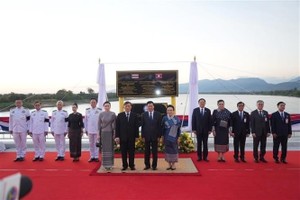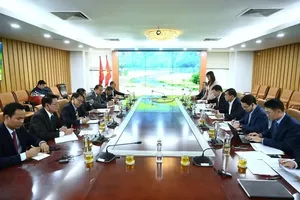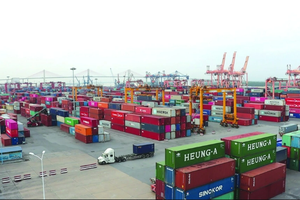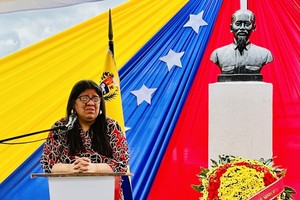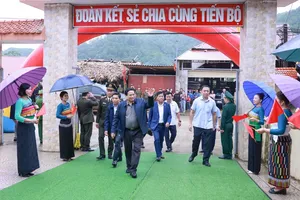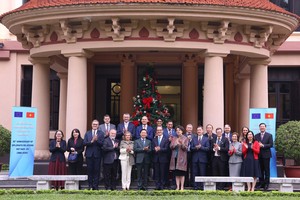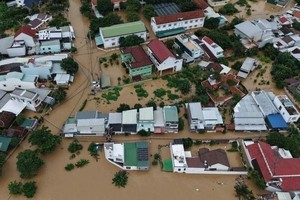An army of 8,000 workers, hundreds of trucks and a fleet of bulldozers are carving up this Amazon outpost to build the world's third-largest hydroelectric dam, amid concerns it could irreversibly harm the way of life of local indigenous people.
The Belo Monte dam -- a frenetic island of activity in the sweltering Amazon in Brazil's north, which has alarmed many environmentalists with its utterly massive scope and potential damage to local traditions -- casts a long shadow over the upcoming Rio+20 United Nations Conference on Sustainable Development.
More than 100 heads of state and thousands of participants from governments, the private sector and NGOs will converge on Brazil for the June 20-22 event marking the 20th anniversary of the "Earth Summit" in 1992 in Rio de Janeiro.
It aims to break years of deadlock on pressing environmental issues and set up long-term paths towards green development.
The $13 billion dam on the Xingu River in many ways is the perfect illustration of the kind of extremely tough choices Brazil's government has to make, navigating often conflicting needs to develop its electric power grid, encourage economic growth and job creation, while also showing respect for its indigenous people and their traditions.
After centuries of slow-going, Brazil in under two decades has emerged as a key international economic player, on the back of massive natural resources, newly booming farm wealth and now manufacturing heft as well.
There is no shortage of tough choices for Brazil -- the world's sixth-largest economy -- with respect to the controversial Belo Monte dam.
On the one hand, it has managed to reduce the rate of deforestation that used to take place in the Amazon basin, and claims to have the most renewable energy in its grid of any major economy.
But it has an economic imperative to develop its domestic energy supplies if it is going to keep up with demand and potential economic growth. And it has a tradition of massive public works operations, from dams to highways, in the Amazon basin.
A sweeping overflight of the Belo Monte construction site offers a feel for its positively pharaonic scope.
In a clattering twin-engine craft soaring over the Xingu, one of the major jungle rivers that empty into the Amazon, the staggering volume of earth already moved is evident.
Meanwhile workers resembling bees in a hive from high are racing to bring out the stone at three separate local quarries, jarring amid the dark green scenery and stifling humidity.
About 900 massive trucks and heavy machinery teams rumble in the jungle for about 17 hours a day.
By the end of this year, there will be 12,000 workers forging ahead with the massive project, an amazing 24 hours a day.
Then staffing will almost double again to 22,000 workers pushing Belo Monte forward in 2013.
Its first turbine is supposed to roar into operation in 2015, and to be fully onstream in 2019.
The dam has its supporters -- businesses and workers, by and large -- but it has drawn staunch opposition from environmentalists such as rocker Sting, and director James Cameron of "Avatar" fame.
It will use enough cement to built 48 football stadiums identical to Rio's 92,000-capacity Maracana. The staggering volume of digging that has to be done to redirect the river with a 20-kilometer canal will relocate the same amount of earth as was moved to make the Panama Canal.
Even as the local population booms as workers move in, health and education services are clearly not able to keep up with the breakneck pace of change.
And that is happening against the backdrop of many towns being flooded to build the dam. About 6,000 families are readying to move out now as their houses will soon be underwater.
"I do not want to go somewhere else," said Helinalda de Lira Soares with her three children close by. She lives in a neighborhood of humble, rustic wooden housing on stilts at the water's edge, near a drain pipe clogged with garbage. But she says she is proud of her home, and does not want to leave.
Neither she nor her neighbors have any idea where they will go.
"Construction on Belo Monte is going really quickly... but the public housing they promised in the city and other towns is moving really slowly," she said.
The government and power company building the dam have pledged massive investment in housing and local infrastructure as well as aid for indigenous communities. So far, little of what was promised has panned out.
And in the crosshairs of the massive Belo Monte project: the relatively tiny local indigenous community of 2,000 people who traditionally fished the Xingu to survive.
Once built, the dam will have a capacity of 11,233 MW -- generating about 11 percent of the country's power.
That will put it behind only China's Three Gorges Dam and the Itaipu dam shared by Brazil and Paraguay. The new dam will flood 502 square kilometers -- almost doubling the area the river takes up now.
Local residents look likely to be hard hit by the loss of water volume in the river on which they depend for their livelihoods, especially in an area called Volta Grande.
"We live on fishing, and we are going to see the river basically dry up, we feel very threatened," said Marino Felix Juruna, the son of the local indigenous leader in Paquicamba, home to about 60 ethnic Juruna people. They live about three hours from Altamira by speedboat.
Their humble village of wooden homes and a primary school boasts some incongruous satellite antennas and upscale speedboats.
"Since the indigenous people were the only ones threatening the project, they have been co-opted with speedboats and giveaways," said Jose Cleanton, a Catholic missionary working with indigenous communities, who warned that their survival as a community was at stake.
"There are alcohol problems, and the problems of everyone leaving the traditional village," said Cleanton. The Juruna people have asked for a fish-raising facility and for a bigger school.
For now they are waiting, as the world around them rumbles fast toward change.
